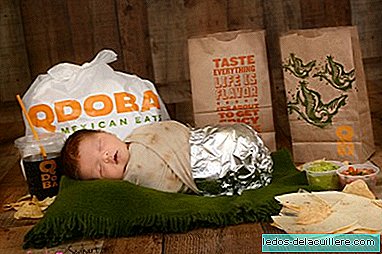
The food pyramid says that in the second most important food group to consume are fruit, vegetables and vegetables. But when it comes to seeing what children and adolescents eat, there are few who eat them daily and many who barely taste them throughout the week.
This causes an imbalance in the diet because all the hunger that they do not take away with these foods satisfies it with others, causing excesses and imbalances that are reflected, perhaps, in a greater weight than recommended, and in a, perhaps, worse state of health general.
For this reason, in the United States (where I would say that children still eat worse than the Spaniards), they set out to do something for the children to eat more vegetables, and this is how they succeeded.
Salads in schools
Some time ago an initiative called Let's Move Salad Bars to Schools, thanks to which there are more than 4,800 bars full of products to make a salad in schools. About 50% of high school students, 39% of middle school students and 31% of elementary school children have access to one of them. The problem was that the children did not approach them.
That is, the first step was the right one: for children to eat salad, they have to have it available. And once they have it available, they have to be interested in approaching to take food from it.

So as we read in Medline, Lori Spruance, a professor of health sciences at Brigham Young University in Provo, Utah, decided to study with other researchers, what could be a good method to achieve it.
To do this, they observed the students of 12 New Orleans schools. They discovered that those schools that struggled to publicize their salad bars more earnestly they got their students to use them three times more than in the others.
What advertising they used
The most successful advertising methods were the ads in different locations of the school, information about them in publications and school newsletters and the promotion of the salad bar on the website. Where the salad bar was most promoted, where there was more talk about it, the children responded better.
In addition, they saw that there was a better answer when parents also promoted healthy eating at home:
It takes a lot of effort and time, but most children and teenagers require repetitive exposures to food before eating them on their own. If a child is exposed to foods at home that are served at school, the child may be more likely to eat those fruits or vegetables at school.
As a curiosity, say that in the study, published in the magazine Health Education and Behavior, they saw that teenage girls and girls used the salad bar more often than boys, and that in general, boys who say they prefer healthy eating use the bar more often than the rest.
And how do we do it at home?
We don't have salad bar, but yes we can put food in sight. Many children hardly eat fruit or vegetables because they do not see their parents eat it, and because they do not see these foods frequently. That is why it is worth continuing to put them on the plate, that they see them, that they see us eat them, that they have them in front, and that they are not forced to eat them.
We can suggest them, but it does not seem a good idea to force, because there is more risk that the aversion to the forced will make them reject it even more. If anything we can do something similar ... explain that it is practically the most important thing they can eat, always offer without forcing, so that they feel free to eat it (as I say, if they feel pressured they tend to say no), and occasionally Include it in our games: when we play cooking, when we play with dolls and the characters want to eat vegetables to be more active, etc. In addition, they can serve some marketing tricks like these that we discussed not long ago.
As they say, for someone to do something they have to be motivated to do it: it's not enough to tell him to do it. Well, children, the same. It is interesting to cultivate that motivation so that they themselves decide to eat vegetables and fruit. If they are one of those who barely try them, you should know that it is not something that happens overnight, but it is something we have to do as parents.












